FORMER MELBOURNE HARBOUR TRUST WILLIAMSTOWN WORKSHOPS
ANN STREET WILLIAMSTOWN, HOBSONS BAY CITY
-
Add to tour
You must log in to do that.
-
Share
-
Shortlist place
You must log in to do that.
- Download report




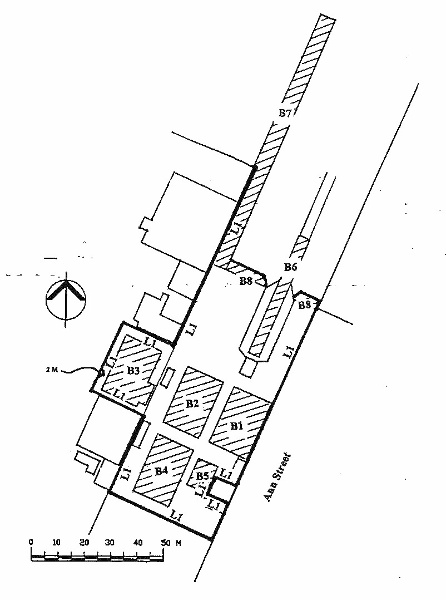
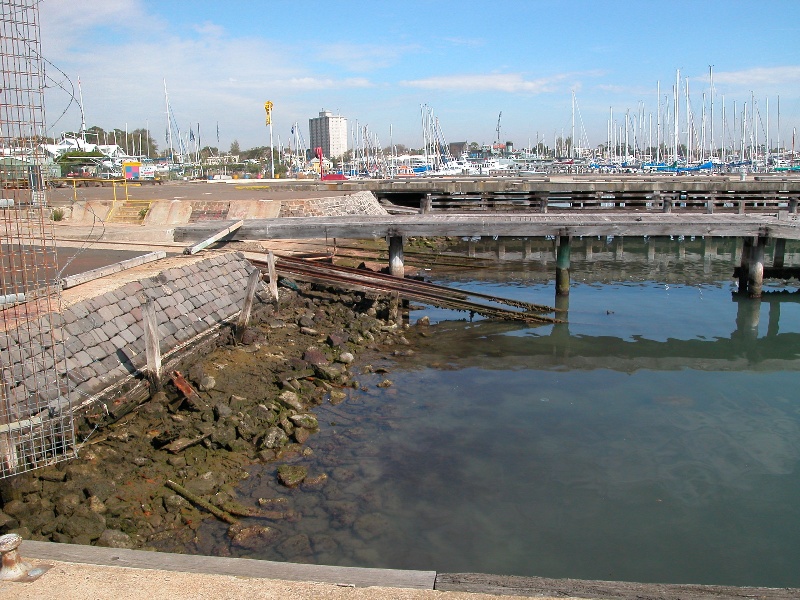
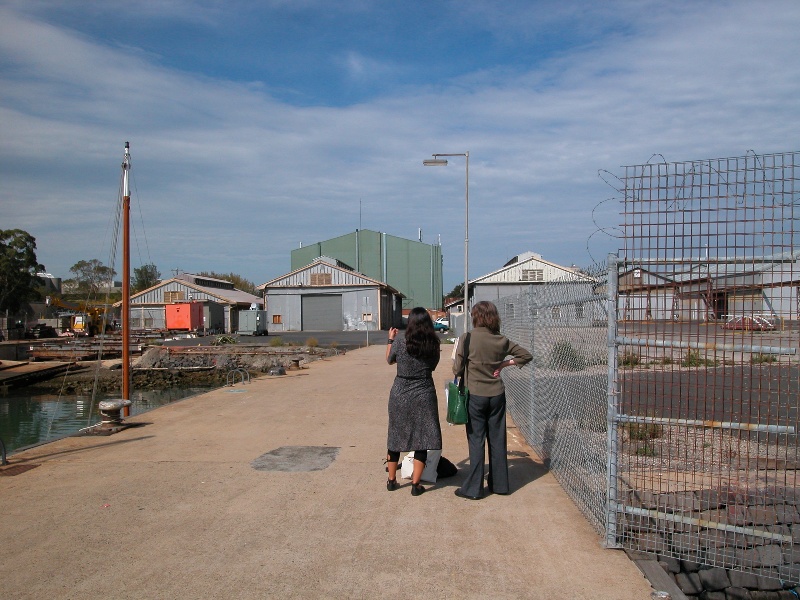
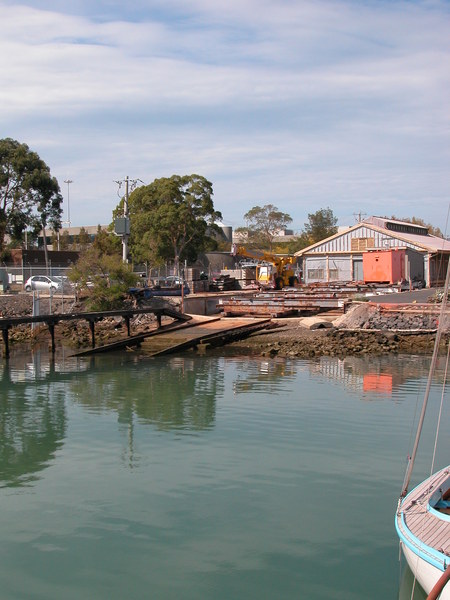
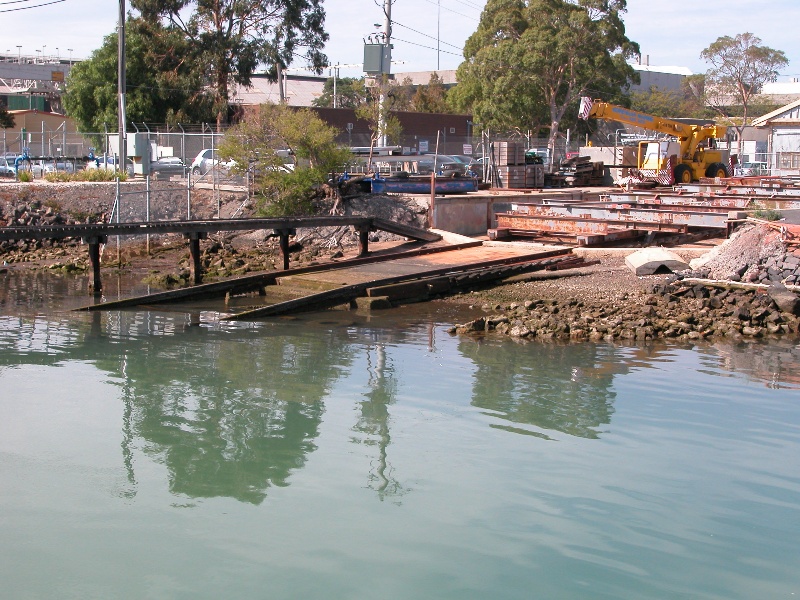
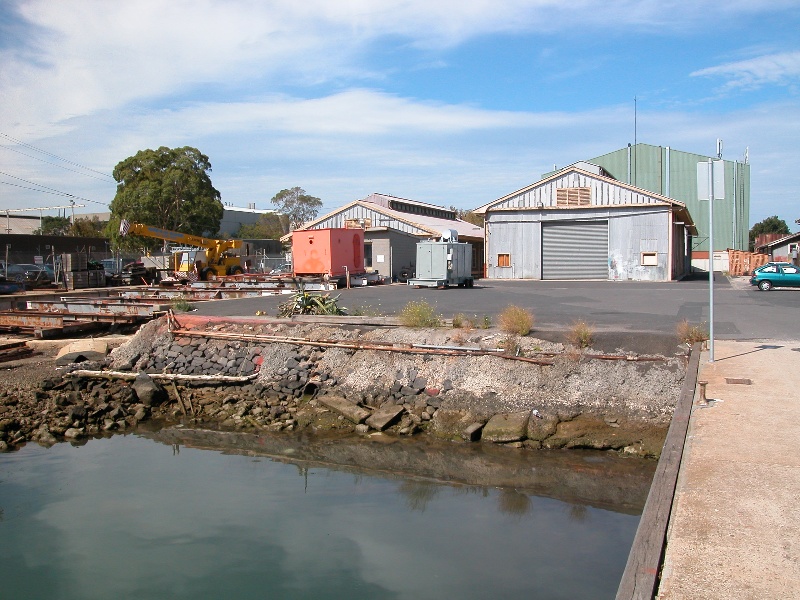
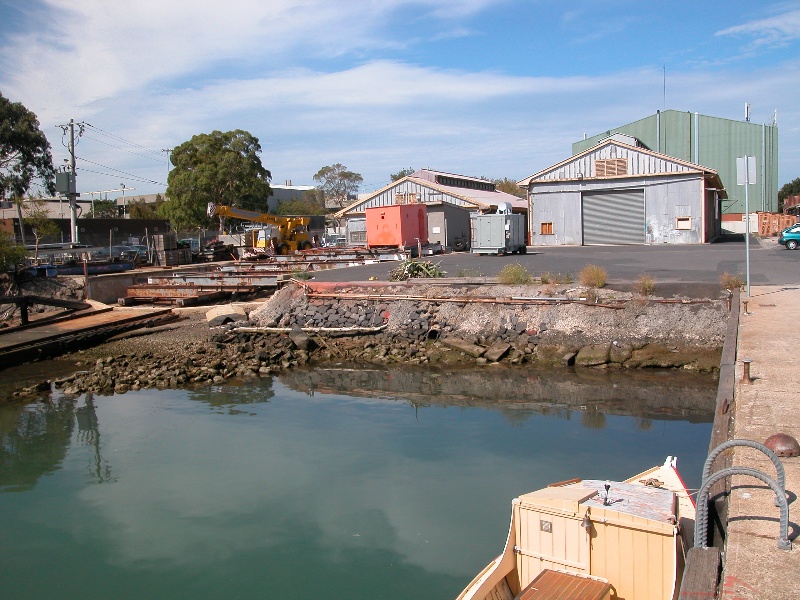
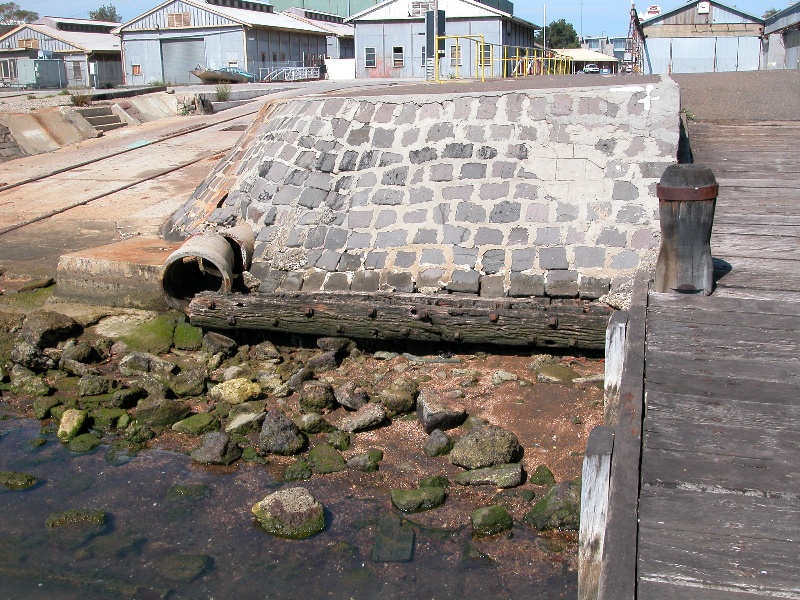
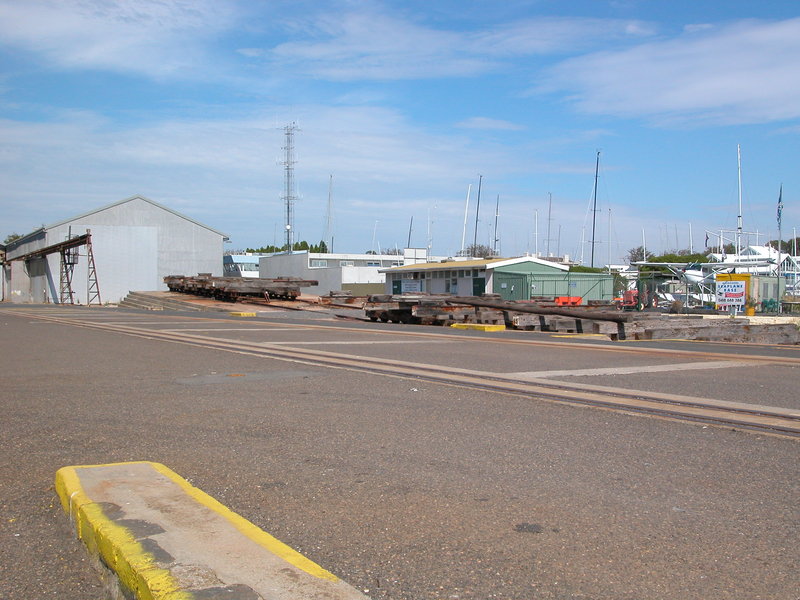
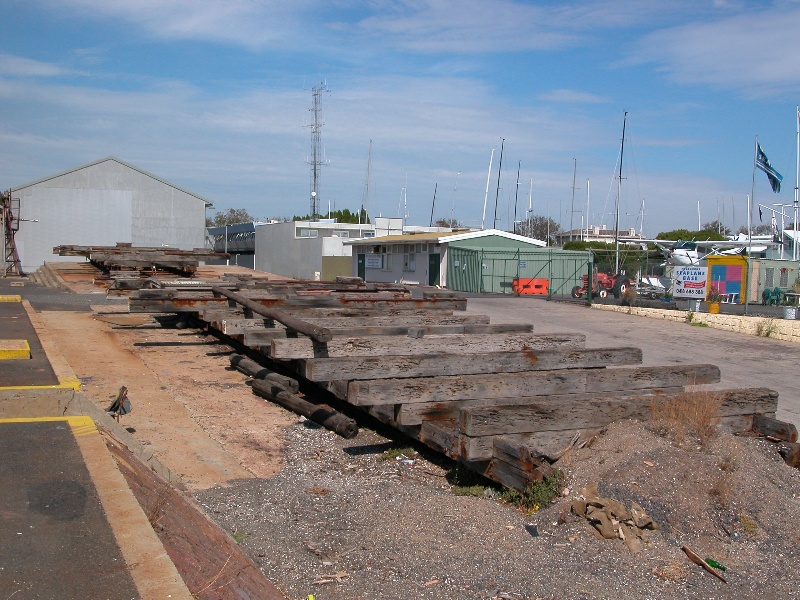
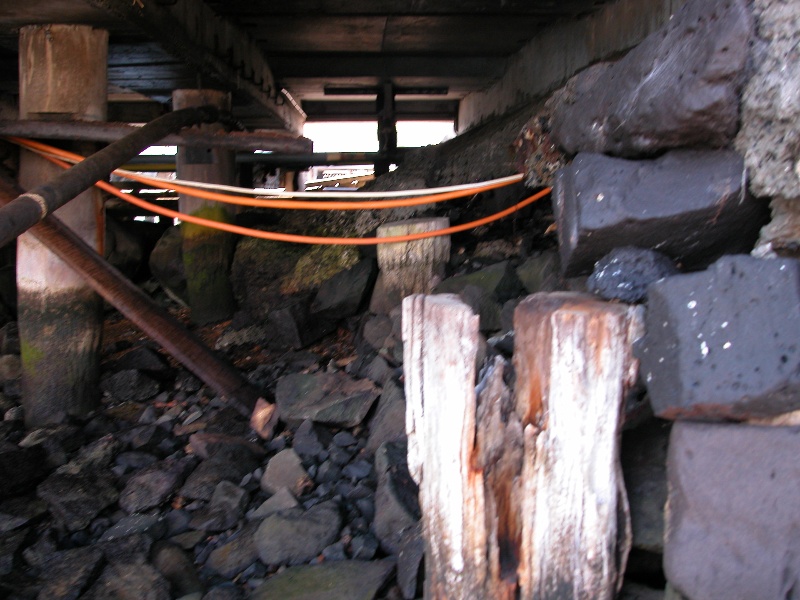
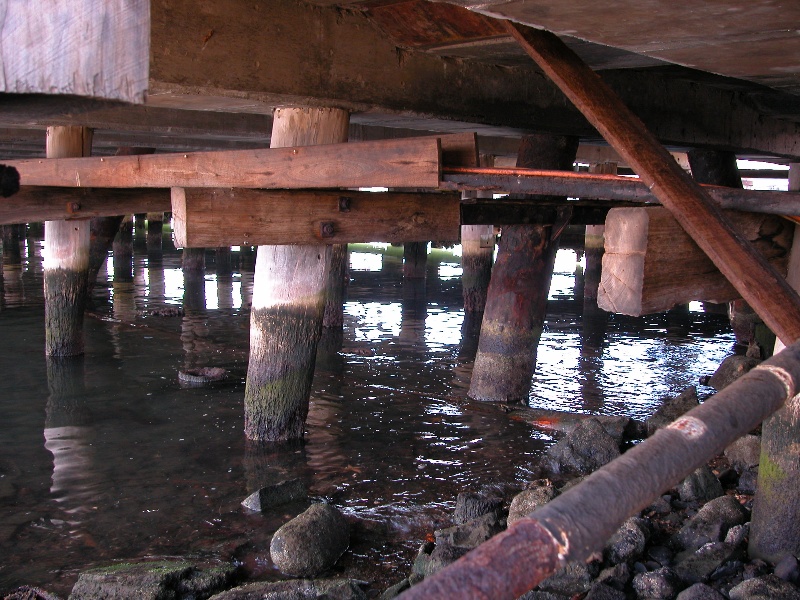
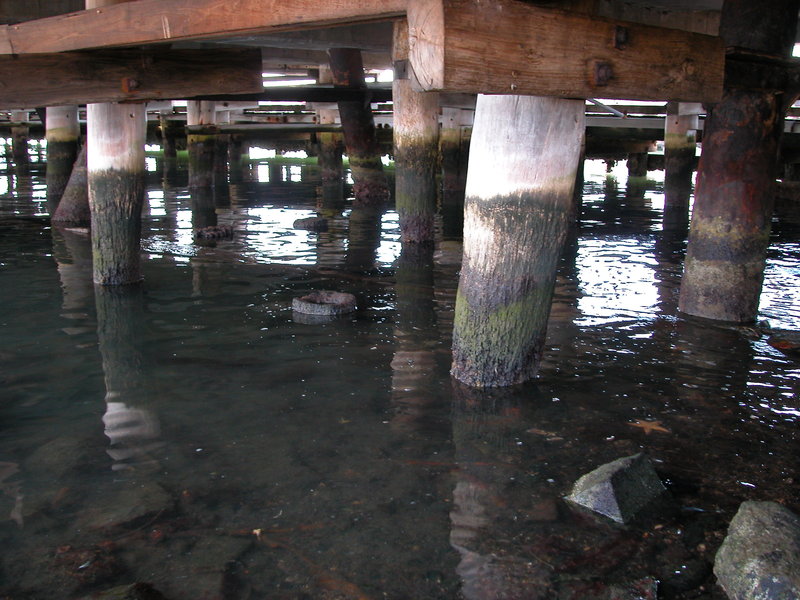









Statement of Significance
What is significant?
The Melbourne Harbor Trust Stores and Workshops were originally built as a single cargo shed measuring 300 feet by 50 feet on North Wharf in 1887-88 by James Forbes and Co. Originally known as Shed No.27, it was renamed in 1916 as Shed No. 20 to correspond with berth No. 20 on North Wharf. It was reconstructed in 1921-22 as four separate sheds measuring 80 feet by 50 feet each, comprising Store (Shed 1), Machine Shop (Shed 2), Boiler Shop (Shed 3) and Blacksmiths Shop (Shed 4), and relocated to specially reclaimed land adjoining the Harbour Master's headquarters on Nelson Place. Boyd Jetty, the bluestone rubble wall, the slipway and land reclamation works were completed in 1922. The works were undertaken by Thompson and Chalmers. The smaller 5th shed, behind Shed No.1, is thought to have been built in 1914 by E Wilson. The four main buildings are of simple gable form with walls and rooves clad with corrugated iron, the walls divided by either timber or steel columns into five bays at the gable ends and eight bays at the sides, each of which had either a door or window when relocated in 1922. Shed No.1 was reconstructed closest in form to the original, being the only one retaining the original timber columns and height. It also has heavy timber trusses at each end, a detail added in 1922 and a large door on its south gable end. The height of the other three main sheds was raised by the replacement of the original timber posts with longer ones of rolled steel, otherwise they are almost identical. They all retain the notable 1887-88 steel trusses with metal rods for the lower chord and vertical members and angle 'T' iron for the top chord and angular compression members, as well as retaining the ridge ventilators and lanterns. The sheds also have a rectangular panel of timber louvres in the front and rear gables. The smaller 5th shed, of similar form, is a timber framed, gable roofed corrugated iron clad building.
How is it significant?
The Melbourne Harbor Trust Stores and Workshops are of architectural and historical significance to the State of Victoria.
Why is it significant?
The Melbourne Harbor Trust Stores and Workshops are of historical and architectural significance as rare examples of early port cargo sheds. Along with the remnant east end of Shed No.9 at South Wharf (1887-8) and Shed No.2 at South Wharf (1891), they are the remains of the oldest surviving cargo sheds in the Port of Melbourne and the most extensive, most intact and least altered. Although moved from their original location, they are set in a significant historical maritime precinct which includes the slipway, Boyd Jetty and nearby Ann Street Pier. The site remains the oldest Melbourne Harbor Trust stores and workshops complex.
The Melbourne Harbor Trust Stores and Workshops are of historical significance for their association with the great period of port development instigated by the establishment of the Melbourne Harbor Trust in 1877. They are evidence of the movement of the port downstream as the Yarra River was widened and realigned in response to rapidly increasing trade, shipping and technological developments. They also demonstrate the expansion and centralisation of the Trust's maintenance, repair and construction facilities at Williamstown and of its new policy of conducting maintenance internally in the early 20th century. They also played a major role in providing maritime services for the Australian and United States fleets during the Second World War.
The Melbourne Harbor Trust Stores and Workshops are of architectural significance as rare examples of utilitarian corrugated iron sheds incorporating English Domestic Style timber detailing, dating from its relocation date of 1922. Although architectural detailing was applied to some late 19th and early 20th century industrial buildings, these workshops are now one of the last known examples of this type of industrial design in Victoria. The buildings are also architecturally significant for their retention of rare surviving examples of original roof trusses constructed of angle iron and tie-rods. The only other known examples are the few which survive at Shed No.9, South Wharf.
-
-
FORMER MELBOURNE HARBOUR TRUST WILLIAMSTOWN WORKSHOPS - History
Contextual History:
Williamstown, or Gellibrand's Point as it was first known, was identified by William Lonsdale, Police Magistrate and first Government administrator of the Port Phillip settlement, as the logical place for the official government headquarters in the settlement on his arrival in the district in 1836. The promontory of land at Point Gellibrand offered shelter for shipping and deep water off the point provided anchorages. Many early settlers who had preceded Lonsdale to the district had used the beach at Gellibrand's Point as a landing place for themselves and their livestock. The lack of fresh water at Williamstown, combined with the fact that most settlers had congregated on the Yarra at Melbourne, meant that Lonsdale later changed his mind (HRV Vol 1, p. 84). But Williamstown's suitability for maritime infrastructure was confirmed by NSW Governor Bourke when he visited the settlement in 1837. The first government-constructed jetty in the Port Phillip District was begun at Williamstown in1839. Passengers of ships moored in Hobson's Bay transferred to this jetty in smaller vessels before being lightered up the Yarra River to Melbourne or across Hobson's Bay to Sandridge (Port Melbourne).
Maritime transport was pivotal to the early development of the colony of Victoria. Most post-contact immigrants to the colony arrived by sea. While maritime transport was the means by which imports and exports moved into and out of the colony, it was also relied on for intra-and inter-colonial transport well into the twentieth century.
Private boat builders and shipwrights were located at Williamstown and along the banks of the Yarra River as early as the 1840s. The influx of shipping occasioned by the gold rushes of the 1850s highlighted the pressing need for ship and boat repair facilities. A Select Committee of the Parliament of Victoria in 1853 argued that, despite the presence of a number of private operators, a ship repair facility was needed in Melbourne. The Government constructed a patent slip at Williamstown between 1856 and 1858 and then offered it for private lease (Victorian Government Gazette, 1859, p. 955). By this time, Wright's Slip, was located on the Williamstown foreshore.
By the late 1850s, the Government had also created a 'marine yard' at the corner of Nelson Place and Ann Street. The construction of the Alfred Graving Dock for the Government in the 1860s-1870s further developed the general area between Thomson St and Gellibrand Pier (then called Railway Pier) as a shipbuilding and repair centre, both private and government.
In January 1877 the Melbourne Harbor Trust was constituted by an Act of the Victorian Parliament. Under the Act, the Harbor Trust gained control of the land, jetties, piers and docks (aside from those operated by the Railways Commissioners at Williamstown) at Williamstown. The following year, the Trust took over the Government Marine Yard. Much of the work of the MHT was taken up with dredging both the Yarra River and Hobsons Bay. The maintenance and improvement of the Port of Melbourne required the MHT to carry out constant dredging in both the Yarra River and Hobsons Bay. The Trust used workshops at Williamstown and Coode Island to build, maintain and repair dredging plant and other vessels.
History of Place:
Wright's Slip is named on a map of Hobson's Bay dated 1858. (CS85 Ross) as is the Government Patent Slip and a dockyard located between Ann Street Pier and Wright's Slip. The Government Marine Yard, which was partly built on reclaimed land, was located on the corner of Nelson Place and Ann Street, adjacent to the Ann Street Pier, on which construction began in 1854.
When the Melbourne Harbor Trust (MHT) was constituted it continued to lease sites along the waterfront to private operators. Wright's Slip continued to operate under lease from the Harbor Trust Commissioners. In 1878 the MHT took control of the Government Marine Yard (apart from buildings used by the water police). The marine yard, about one acre in area, contained the Assistant Harbor Master's office, a workshop and a boatshed, as well as a boat slip. (MHTC Report 1878) This became the nucleus of the Harbor Trust's workshops at Williamstown. The Trust also established a second slipway and workshop at Coode Island.
In 1902, the lease on what had been 'originally known as Wright's Slip' expired and the MHT took over the slip. By 1913 the commissioners had made it suitable 'to safely construct and handle a vessel of at least 250 tons weight' by 'renewing ways, building up the stone walls and filling them in, erecting workshops, fencing the slip and providing a new cradle.' On completion of these works, the Commissioners leased the slip for five years to Gray Brothers (MHT Commissioners' Report 1913, p. 22) By this time the Commissioners had erected further workshop buildings on the old Marine Yard site in Nelson Place. (MHTC Report 1913) In 1921, hoping to centralise all of their workshops at Williamstown and close the MHT workshops on Coode Island, the Commissioners had reclaimed a further area of one acre, three roods and eight perches between the old Marine Yard and the sea at the Ann Street site. They enclosed the area with a rubble wall and pumped dredged sand ashore. They also built a new pier (later called Boyd Pier) 250 feet long and 20 feet wide. It was on this reclaimed land that the commissioners erected four sheds to serve as a blacksmith's shop, machine shop, boiler shop and store, using recycled material from a shed at Number 20 North Wharf on the Yarra.
The MHT continued to reclaim land to the west of the workshops in the 1920s (MHTC Report 1921, p. 18), reclaiming land between the Ann St and Gem Piers by 1926. This included the site of Wright's Slip. When the reclamation was completed, the Trust ordered the removal of Blunt's boatbuilding shed, which had 'faced the reclaimed area' on Nelson Place. (Argus, 7 January, 1926, p.7) At the same time, the Trust purchased the Government Dockyard (including the Alfred Graving Dock) from the Commonwealth Government. When the Commonwealth Government reacquired the dockyards in October 1942, the MHT moved to extend and update the Workshops and Slipways site for the repair and maintenance of its own vessels and plant.
To do so, the Commissioners carried out an extensive building programme on the extended, reclaimed site, adding a main shop (boilers shop, machine shop, store and loft) of 120 feet by 280 feet, buildings for riggers, plumbers and electricians, a sub-station, main offices for managers, draftsmen and clerical staff, a mess room, boatbuilders' and ship wrights' shops, a covered storage area and joiners' shop.
In addition the Trust constructed a ship building berth, capable of building vessels up to 120 feet in length, a slipway of 360 feet, a timber jetty, 340 feet in length and a boat slip of 240 feet. The jetty, named Workshops Jetty, was built on the site of Gray's (formerly Wright's) Slip. (VPRS 8362 P/1, photo 220). Piles used in the construction of the building berth and the slipway came from the demolished section of Town Pier, Port Melbourne (MHTC Report 1942). As well as building and maintaining its own floating plant and vessels, the Trust built wooden tugs and Harbor defence launches for the Australian Shipbuilding Board at the workshops. The building berth was extended in 1944 to 200 feet when the Australian Army requested that the Harbor Trust build a new type of 200 ft vessel. (MHTC Report 1944, p. 57) The workshops also produced barges for the RAAF to use in salvaging aircraft (MHTC Report 1944).
The Melbourne Harbor Trust was reconstituted as the Port of Melbourne Authority in 1978. In 1996 Parks Victoria assumed management of the former Workshops site. Workshops Jetty, the boat slip and the 360 feet slipway are still evident on the site, along with Boyd Jetty and the workshops and store relocated to the site in 1921. Potentially there are remains of Wright's Slip under reclaimed land on the site of Workshop's Jetty.
FORMER MELBOURNE HARBOUR TRUST WILLIAMSTOWN WORKSHOPS - Assessment Against Criteria
Criterion A
The historical importance, association with or relationship to Victoria's history of the place or object.
The Melbourne Habour Trust Stores and Workshops at 2 Ann Street, Williamstown, are historically significance as the most extensive, most intact and the least altered of the three remaining 19th century surviving port cargo sheds in Melbourne. When originally constructed the sheds were part of the great period of port improvement occasioned by the formation of the Melbourne Habour Trust in 1877 In addition, along with the remnant east end of Shed No. 9 at South Wharf, they are the oldest surviving port cargo sheds in Melbourne. Although diminished by the loss of their original setting, the present maritime location on Hobsons Bay is significant. While the complex has since been expanded, and complemented by a depot at Port Melbourne, they remain the oldest ex-Melbourne Habour Trust workshops. The site is relatively intact, and set in a historical maritime context with original slipway, jetty (Boyd Jetty) and bluestone wall.
The Melbourne Habour Trust Stores and Workshops at 2 Ann Street, Williamstown, are also historically significance as evidence of the movement of the port downstream as the river was widened and realigned and of the building style used by the trust at the time. The complex also expresses the Melbourne Habour Trust's expansion and centralisation of its maintenance, repair and construction facilities at Williamstown in the early 20th century, and the new MHT policy of conducting maintenance internally rather than by outside contractors. The development of the MHT workshops was integral to the early 20th century expansion of the Port of Melbourne in response to rapidly increasing trade and size of shipping, and other technological developments. The workshops also played a major role in providing maritime services for the Australian and United States fleets during the Second World War.
Criterion B
The importance of a place or object in demonstrating rarity or uniqueness.
The Melbourne Habour Trust Stores and Workshops at 2 Ann Street, Williamstown, are architecturally significance for their English Domestic Style timber detailing on otherwise utilitarian corrugated iron sheds. The Ann Street Workshops now constitutes one of the last known examples of this type of industrial design in Victoria. The buildings are also architecturally significant for their retention of original trusses, which are rare surviving examples of the use of angle iron and tie-rods, comparing with the few which remain at Shed No. 9, South Wharf, built the same year.
Criterion C
The place or object's potential to educate, illustrate or provide further scientific investigation in relation to Victoria's cultural heritage.Criterion D
The importance of a place or object in exhibiting the principal characteristics or the representative nature of a place or object as part of a class or type of places or objects.Criterion E
The importance of the place or object in exhibiting good design or aesthetic characteristics and/or in exhibiting a richness, diversity or unusual integration of features.Criterion F
The importance of the place or object in demonstrating or being associated with scientific or technical innovations or achievements.Criterion G
The importance of the place or object in demonstrating social or cultural associations.Criterion H
Any other matter which the Council considers relevant to the determination of cultural heritage significanceFORMER MELBOURNE HARBOUR TRUST WILLIAMSTOWN WORKSHOPS - Permit Exemptions
General Exemptions:General exemptions apply to all places and objects included in the Victorian Heritage Register (VHR). General exemptions have been designed to allow everyday activities, maintenance and changes to your property, which don’t harm its cultural heritage significance, to proceed without the need to obtain approvals under the Heritage Act 2017.Places of worship: In some circumstances, you can alter a place of worship to accommodate religious practices without a permit, but you must notify the Executive Director of Heritage Victoria before you start the works or activities at least 20 business days before the works or activities are to commence.Subdivision/consolidation: Permit exemptions exist for some subdivisions and consolidations. If the subdivision or consolidation is in accordance with a planning permit granted under Part 4 of the Planning and Environment Act 1987 and the application for the planning permit was referred to the Executive Director of Heritage Victoria as a determining referral authority, a permit is not required.Specific exemptions may also apply to your registered place or object. If applicable, these are listed below. Specific exemptions are tailored to the conservation and management needs of an individual registered place or object and set out works and activities that are exempt from the requirements of a permit. Specific exemptions prevail if they conflict with general exemptions. Find out more about heritage permit exemptions here.Specific Exemptions:General Conditions:
1. All exempted alterations are to be planned and carried out in a manner which prevents damage to the fabric of the registered place or object.
2. Should it become apparent during further inspection or the carrying out of alterations that original or previously hidden or inaccessible details of the place or object are revealed which relate to the significance of the place or object, then the exemption covering such alteration shall cease and the Executive Director shall be notified as soon as possible.
3. If there is a conservation policy and plan approved by the Executive Director, all works shall be in accordance with it.
4. Nothing in this declaration prevents the Executive Director from amending or rescinding all or any of the permit exemptions.
Nothing in this declaration exempts owners or their agents from the responsibility to seek relevant planning or building permits from the responsible authority where applicable.
Exterior
* Demolition or removal (but not replacement or additions) to non registered structures provided such works do not damage building fabric of the Sheds 1, 2, 3, 4 and 5.
* Minor repairs and maintenance which replace like with like.
* Removal of extraneous items such as air conditioners, pipe work, ducting, wiring, antennae, aerials etc, and making good.
* Regular yard maintenance provided such works do not impede on registered structures.
Interior
* Minor repairs and maintenance which replace like with like.
* Painting of previously painted walls, ceilings, exposed woodwork and trusses provided that preparation or painting does not remove evidence of the original paint or other decorative scheme.
* Removal of paint from originally unpainted or oiled joinery, doors, architraves, skirtings, decorative strapping and trusses.
* Installation, removal or replacement of hooks, nails and other devices for the hanging of mirrors, paintings and other wall mounted artworks.
* Refurbishment of bathrooms, toilets and or en suites including removal, installation or replacement of sanitary fixtures and associated piping, mirrors, wall and floor coverings.
* Installation, removal or replacement of kitchen benches and fixtures including sinks, stoves, ovens, refrigerators, dishwashers etc and associated plumbing and wiring.
* Installation, removal or replacement of electrical wiring provided that all new wiring is fully concealed and any original light switches, pull cords, push buttons or power outlets are retained in-situ. Note: if wiring original to the place was carried in timber conduits then the conduits should remain in-situ.
* Installation, removal or replacement of smoke detectors.FORMER MELBOURNE HARBOUR TRUST WILLIAMSTOWN WORKSHOPS - Permit Exemption Policy
Permit Exemptions are given below which do not affect the overall significance of the structure or historic place. The exemptions generally are for maintenance and minor works to the buildings.
-
-
-
-
-
FORMER MORGUE
 Victorian Heritage Register H1512
Victorian Heritage Register H1512 -
WILLIAMSTOWN PRIMARY SCHOOL
 Victorian Heritage Register H1639
Victorian Heritage Register H1639 -
RESIDENCE
 Victorian Heritage Register H0487
Victorian Heritage Register H0487
-
'Lawn House' (Former)
 Hobsons Bay City
Hobsons Bay City -
1 Fairchild Street
 Yarra City
Yarra City -
10 Richardson Street
 Yarra City
Yarra City
-
-












